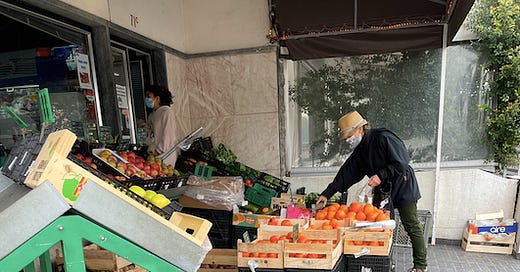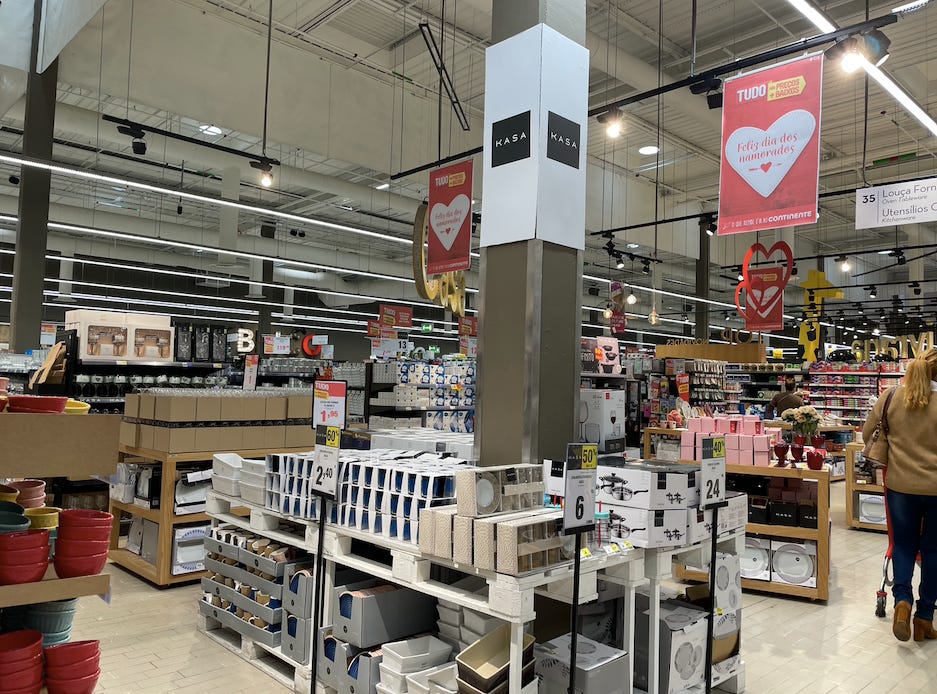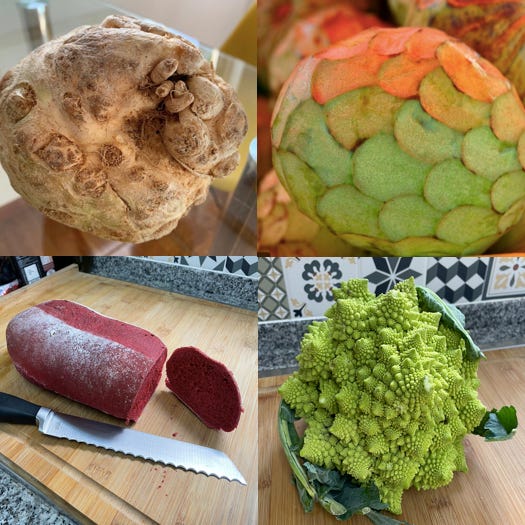We have only been in the country for 6 weeks…so we are still learning a lot. I am fairly certain that we have not yet learned how to grocery shop the way the Portuguese do.
Grocery Outlets
To be honest, I am not certain we shopped like typical Americans when we lived in the states. Our home in California was within 2 miles of Aldi, Trader Joe’s, Walmart Neighborhood Market, and Whole Foods. Denise (who was responsible for shopping) would typically make a loop. Stopping first at Aldi, then Trader Joe’s, and then Walmart for paper products and the like.
Since during lockdown there is nothing else to do, we have made our shopping excursions together. Though we are not experts, I would suggest there are four types of grocery outlets available:
Corner Markets - Like the store pictured above, you will find small family-owned outlets throughout the country.
Grocery Stores - We have also shopped in Aldi, Lidl, and Pinga Doce in Portugal. Some of these chains are available in the states and/or other European countries.
Large…Super-Walmart Like Stores - We have also visited Continente and Auchan which sell food along with kitchen appliances, sheets, towels, dishes, children’s clothes, etc.
Mercado da Vila - Similar to a farmer’s market on steroids, the one in Cascais (which we have not been able to visit yet) is relatively famous.
Selection
Finding what you want is not difficult. In fact, the wine and cheese offerings are so numerous that it is often difficult to make a decision.
Since I don’t eat meat, Denise rarely does. But we do eat fish…which is also fresh, plentiful, and inexpensive (when compared to the U.S.).
We also eat plenty of vegetables. Again they are plentiful and fresh! Whenever we travel, we try to eat the local fare. Since 90% of our diet is fruits and vegetables we often buy items and then figure out later how to use them.
So What Does it Cost?
Denise is actually keeping a spreadsheet! So in a few months, we will be able to provide you a very detailed breakdown. At this point, I would estimate that our grocery expenditures are running about 25% less than in the US. Remember, we are in lockdown…so we aren’t eating out. Also, we are learning how to shop in Portugal. I suspect since most of our diet is fruits and vegetables…we can actually save more.
One Final Observation
If you have traveled to Europe you know that the price on the label includes all “sales” tax…6.5% or 7.25% is not added at the end. In Portugal, at the bottom of the receipt, you get a breakdown of what proportion of your total bill was taxes (%IVA) broken down by category. Each item on the receipt also shows you into which category that item falls. Essential items (fish, fruits, vegetables, milk, and bread for example) are taxed at 6%. Some wines are taxed at 13%, while others at 23%. Stuff that isn’t as good for you (pastries, chips, coffee, etc) is also taxed at 23%. It would appear the government is promoting healthy eating.
Let us Know: Drop me an email or put it in the comment section below … what are your top 5 items you want us to include in our future cost analysis? Milk, eggs, asparagus, ground beef, toilet paper? Even if we don’t eat it, we will do the research for you and include it in our future posts!










One thing I’m curious about is the availability and cost of ingredients for Mexican cuisine - as a lifelong Californian up to this point, Mexican is my comfort food zone and I know we’ll want to at least occasionally make some of our favorite dishes. Also interested in whole and bulk spices.
Thank you so much for sharing your knowledge with us!